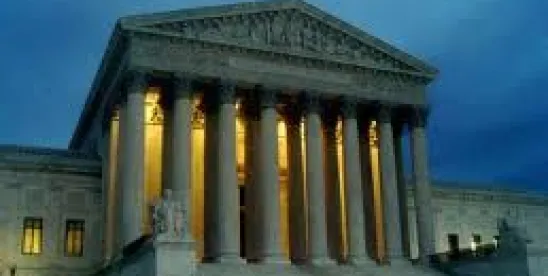In a decision reaching all corners of the technology sector, the U.S. Supreme Court on June 29, 2021 held that, when fairness requires, a patent inventor can contest a patent's validity after assigning it to a third party. Prior to this decision, the doctrine of "assignor estoppel" prohibited inventors from doing so under Federal Circuit law.
Background of the Decision
Minerva Surgical, Inc. v. Hologic, Inc. involved a life sciences patent application directed to a device for treating abnormal uterine bleeding. The inventor assigned his interest in the application, including any later-filed continuation applications, to a third party (ultimately, Hologic). The inventor's company, Minerva, then developed an allegedly improved medical device for treating the same issue. Hologic, aware of the new device according to the Supreme Court, filed a continuation patent application purporting to cover Minerva's new device. The Patent and Trademark Office issued Hologic's continuation claims, and Hologic sued Minerva for patent infringement.
Minerva argued, in defense, that Hologic's continuation claims were invalid because the inventor's original patent application did not adequately describe the claims. Hologic cried foul under the doctrine of "assignor estoppel"—the inventor "could not impeach the patent's validity" because he had made an "implicit representation" that the "rights he is assigning (presumably for value) are not worthless." The district court and Federal Circuit agreed with Hologic.
While the Supreme Court accepted the concept of Hologic's argument—that "assignor estoppel" exists on principles of fairness—it disagreed with the application here because precluding Minerva's argument was contrary to fairness principles. The Supreme Court held that "[a]ssignor estoppel should apply only when . . . . an inventor says one thing (explicitly or implicitly) in assigning a patent and the opposite in litigating against the patent's owner." But "when the assignor has made neither explicit nor implicit representations in conflict with an invalidity defense, then there is no unfairness in its assertion."
The Decision's Impact
Although not exhaustive, the Supreme Court gave three examples in which "assignor estoppel" would not preclude an inventor from challenging his or her patent's validity, after assigning it:
-
An employee who signs a "common" employment agreement that assigns rights to any future inventions developed during employment could challenge the validity of such future inventions because, as of the date of that agreement, the "invention itself has not come into being" and therefore the inventor could not have made representations regarding validity.
-
After a change in law, rendering a prior representation of validity meaningless, an inventor could argue that the patent is invalid based on the change in law.
-
At issue in the present case, an inventor who only assigns a patent application can argue that later-filed claims are invalid if such claims "go beyond" what the inventor intended to claim as patentable.
These three scenarios paint a complex picture for employers, in particular. It is foreseeable, for example, that a former-employee-turned-competitor could mount a colorable challenge to patent claims filed based on inventions assigned during employment if the former employee argued that those claims went "beyond" what the employee envisioned at the time. As a result, employers may desire to change their practices regarding the assignment of patent interests—for example, to periodically amend or enter new assignment agreements with inventors (if possible) that include representations regarding the validity of newly-filed patent claims based on an earlier application.




 />i
/>i

